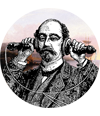The DASCorps Survival Guide: Marketing
Categories:
At some point during your VISTA year, you might be tasked to create marketing materials for your program or even a marketing plan for the entire agency. In this section, you will learn the steps and ideas inherit in a marketing plan.
What is Marketing?
Marketing is the process of discovering the needs and wants of a prospective customer and satisfying them.
What is a Marketing Plan?
A Marketing plan is a document that details the actions and overall plan to achieve certain marketing objectives.
Marketing Plan vs. Business Plan
A business plan details the goals of the business, including reasons for and plans to attain the goals. The marketing plan is a part of the business plan.
Marketing Plan vs. Communication Plan
The communication plan is the detailed actions to achieve certain marketing objectives. The communication plan is part of the marketing plan.
The Four I’s of Service Marketing
When marketing services, there are four unique elements that must be taken into account.
- Intangibility: Because services are intangible, they are harder for consumers to evaluate, both general quality and benefit.
- Inconsistency: Service depends on the people who provide them; their quality varies by provider.
- Inseparability: Can the consumer/client separate between the deliverer of the service and the service itself?
- Inventory: How much downtime is built into providing the service? How does that affect the client and volunteer experience?
Marketing Plan Part 1: Situation Analysis
The situation analysis describes what is happening in the market your agency is engaged in. The situation analysis consists of the following: marketing summary, SWOT analysis and competition/alternative provider inventory.
Situation Analysis: Marketing Summary
The marketing summary details the market your agency serves. Some details that can be included are:
- Market demographic behaviors: geography; age; gender; income; behavior profiles (including motivation, personality, perception and learning)
- Market Needs: What do people in your area need? How does your agency’s mission/vision address those needs?
- Trends/Growth: Take into account political, economic, social and technological factors in your community
You have options to obtain this info: secondary, such as market and/or demographic reports produced by other agencies/organizations; or primary, where you collect the data.
When surveying consumers/clients, you can use gap analysis, where consumers assess their experiences and expectations of service quality.
To review Inconsistency and Inseparability, 2 of the 4 I’s of Service Marketing, you can develop a customer contact audit, where you list the points of interaction between the client and service provider.
Situation Analysis: SWOT
Review your agency’s strengths, weaknesses, opportunities and threats.
Situation Analysis: Competition/Alternative Providers
Research other non-profit agencies, for-profit organizations and government agencies that deal with the same market and general service needs that your agency does. Keep in mind info such as: events, donors, and features.
Marketing Plan Part 2: Marketing Strategy
The marketing strategy details how you plan to communicate the value of your agency and programming. It takes into account what your goals are, who you are trying to reach, how you want to be seen, and the tools you will use.
Marketing Strategy: Marketing Objectives
In this section, you detail the goal of the marketing strategy, which usually compliments a business/strategic plan goal. Goals should be quantified and measurable in terms of what is to be accomplished and when.
Marketing Strategy: Target Markets
For non-profits/agencies, one of the differences in marketing is who your target market is. For-profit organizations’ target market is their customer or the consumer of the product or service. For non-profits/agencies, there are generally 3 target markets.
- Consumer/Client: This is the same as a for-profit; it is the person who will use your service or product.
- Donor: This is someone who is giving financial or material support to your agency.
- Volunteer: This is a person who is offering service to your agency.
These target markets will have different wants and needs to be addressed. You might have to use different media and tools to communicate with these targets.
Target/Target Audience:
There is a difference between the target and the target audience. This can be especially present when dealing with non-profit consumer/clients. Target is who will be using your service. Target audience is who hears your message and can create change or drive people to your program/agency. For example, a service tasked to reach out to diabetic children could have a target of diabetic children and a target audience of parents of diabetic children.
Marketing Strategy: Positioning and Messaging
What associations do you want consumers, donors, and volunteers to have about your agency? Positioning and messaging help determine these associations.
When you position your agency, you are defining the brand of the agency and where it fits in the market you compete/work in. One way to determine the agency’s fit in the overall market is by using a marketing mix or the 4P.
- Product: What is the service or program you are marketing to the consumer? How is it different or the same from competitors and alternative providers’ offered items?
- Price: How much does the service/product cost. This cost can be monetary, volunteer, or in the amount of time invested in the program by consumer.
- Promotion: How do you communicate to your target and target audience? This takes into account both media and relationships, such as volunteers and community organizing.
- Place: Where can consumers/clients access your services?
Messaging is the tone of the marketing and communications, which reflects the positioning or branding of the agency. This can be anything from logo and colors used to literacy level of written marketing.
You must also communicate these ideas to the agency’s staff; this is internal marketing. Due to the 4 I’s, your program’s marketing is dependant on your staff. They communicate with the consumer (through providing the service), donors (through general contact and special events) and volunteers (who work with staff). Staff might also have to interface with media. The staff should share the same idea of what the program is and it’s importance, so that these values and ideas can be shared with the target markets they come into contact with.
Marketing Strategy: Marketing Execution
Marketing execution is the tactical marketing plan, or how you will communicate with your target audience and market. You should review all previous marketing materials and initiatives to determine what worked and what audiences have previously been targeted.
Review what competitors have been doing in terms of marketing, and whom they are targeting.
Determine the medium you want to use to relay your message, taking into account your audience.
Compile a list of tools and partnerships you can use in your marketing execution.
This is where your communication plan comes into play. Your communication plan will help you manage medium and other factors such as public relations.
Marketing Strategy: Marketing Model
The marketing model details the marketing execution of both programming and the agency as a brand mapped to the target and target audience.
It can be displayed as a table or matrix.
Audience/Who Goal/Why Objective/What Tactics/How and When Success Metric
This can be an easy guide for others to follow. You can detail specific audiences and how to deal with them, such as press or family members of clietns/consumers.
Links/Other Resources
Nonprofit Marketing Plan Walkthrough
Strategic Communications Planning










